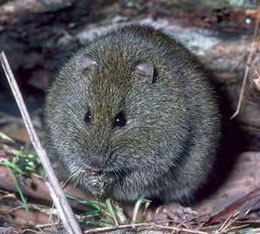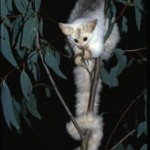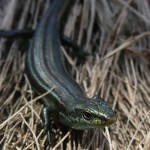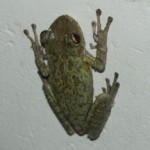This is the second part of our four-part series on Endangered Species in the Black Saturday bushfire area.
 Broad-toothed Rat
Broad-toothed Rat
Endangered Australian native ‘guinea-pig’ in appearance and character, the Broad-toothed Rat is a tubby, compact rodent, chubby-cheeked, with a short, wide face and ears, and long, dense, fine fur. The tail is shorter than the head and body length and is ringed, with very little fur. They are gentle in demeanour and seldom bite when handled gently.
 Greater Glider
Greater Glider
The endangered Greater Glider is Australia’s largest gliding possum with a head and body length of 35 to 45 centimetres and a long, furry tail measuring an astonishing 45 to 60 centimetres. Their thick fur increases the appearance of their size, and is white or cream below and varies from dark-grey and dusky-brown through to light-mottled grey and cream above. It has large ears and strongly reflective eye-shine. Greater Gliders need big, old habitat trees and many of these were destroyed in the bushfires. Plans are underway by volunteers to establish nesting boxes in fire affected areas.
 Alpine Bog Skink
Alpine Bog Skink
The Alpine Bog Skink belongs to a genus of skinks (Pseudemoia) that are native to south-eastern Australia. The Alpine Bog Skink is small-to medium-size lizard, a carnivorous predator, and a highly threatened species.
Photo: Alpine Bog Stink, Falls Creek, Victoria © Jordan de Jong
 Spotted Tree Frog
Spotted Tree Frog
Endangered and extremely rare, the Spotted Tree Frog is a distinctive frog, growing up to 6 centimetres in length. Skin colour is grey to olive above, sometimes with irregular dark blotches. The belly is whitish, and both surfaces are warty or granular. The groin and back of the leg are orange. The call is a harsh ‘warrrk…cruk…cruk…cruk’. The Spotted Tree Frog is a mountain stream species and the spread of introduced trout coupled with habitat disturbances has reduced this species. More recently, a new amphibian disease, Chytridiomycosis (referred to as Amphibian Chytrid Fungus), is threatening the survival of this species in these remaining refuges.
Photo: Merry Rosenfield
This is the second article in a four-part series on Black Saturday endangered species.


Here in Agra, I saw the broad toothed rat. It is really very nice.